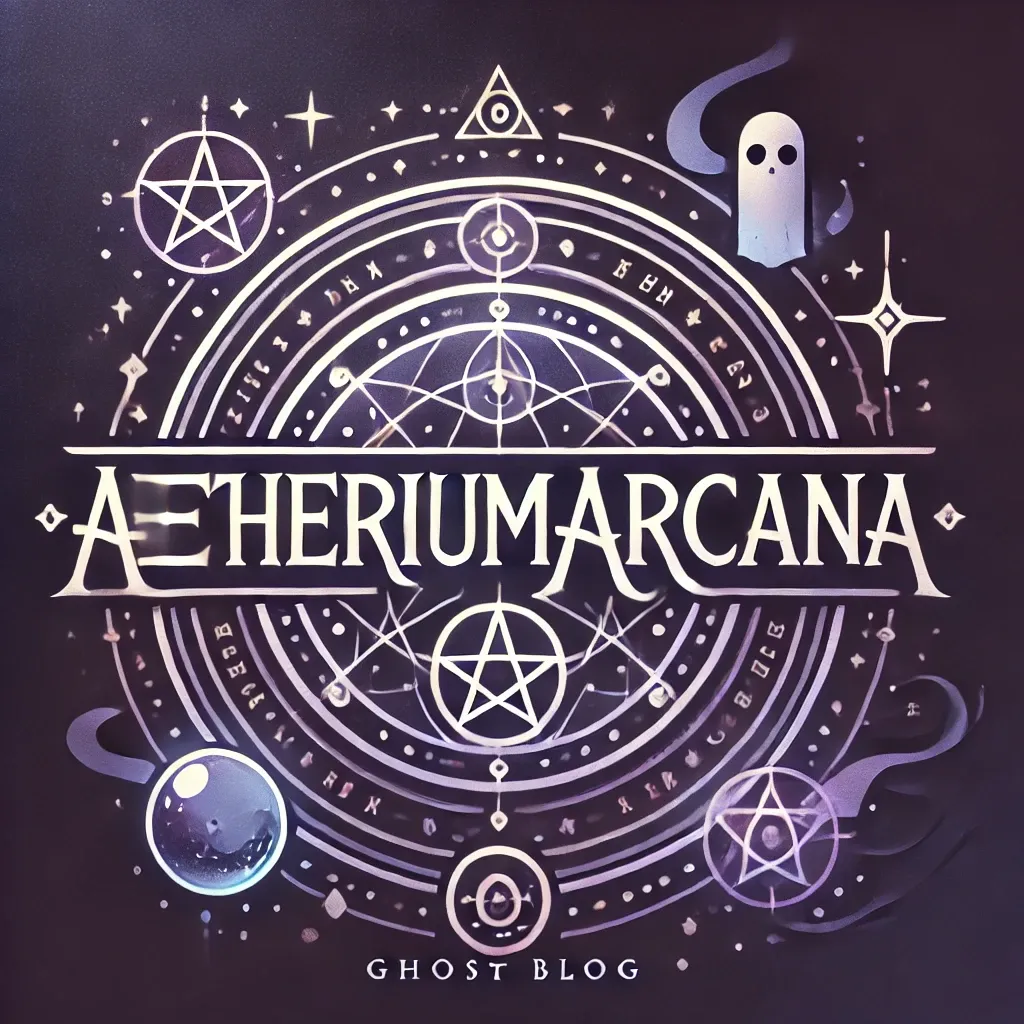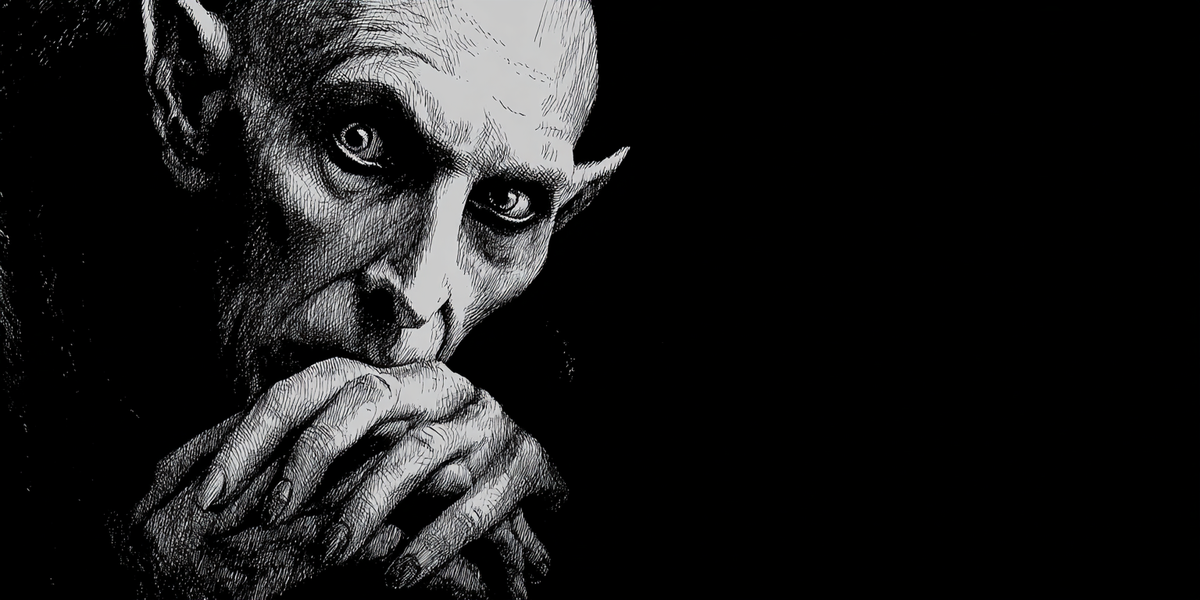When audiences in 1922 first saw F. W. Murnau’s Nosferatu: A Symphony of Horror, they were not simply watching a film based on Bram Stoker’s Dracula—they were witnessing the birth of modern vampire cinema. Though the screenplay was an unauthorized theft, thinly veiled with changed names and altered settings, the result transcended piracy. In Henrik Galeen’s adaptation, filtered through the haunted lens of German Expressionism, the vampire was reborn as a figure of plague, shadow, and inevitable doom. Count Orlok was not the aristocratic seducer of Stoker’s novel, nor the suave gentleman Bela Lugosi would later make famous, but a gaunt, rat-ridden contagion: death personified. The imagery Murnau and Galeen conjured—elongated shadows creeping up staircases, coffins spilling over with vermin, a town smothered by pestilence—spoke to a world still reeling from war and epidemic. It was this synthesis of stolen story, visual distortion, and cultural trauma that made Nosferatu more than a cinematic curiosity. It was the foundational text of vampire film, one that set the terms of the genre for every adaptation that followed, from Universal’s Gothic melodramas to Robert Eggers’ recent remake.
Nosferatu begins with a curious act of theft. Henrik Galeen, the screenwriter, worked from Bram Stoker’s Dracula almost scene for scene, but the production company, Prana Film, had failed to secure the rights. To evade detection, Galeen changed names and geography: Count Dracula became Count Orlok, Jonathan Harker became Thomas Hutter, Mina was transformed into Ellen, and London’s Whitby was relocated to the fictional port of Wisborg. The disguises fooled no one. Stoker’s widow, Florence, sued, and a German court ordered all existing prints destroyed. Only a handful of copies survived, smuggled out and duplicated, ensuring the film’s survival against the odds. What could have remained a cinematic dead end instead became immortal.
The act of plagiarism, paradoxically, freed Nosferatu to evolve beyond its source. Galeen and Murnau were not content to reproduce Stoker’s Gothic melodrama; they reshaped it through the lens of German Expressionism and postwar anxiety. Out went Stoker’s garrulous Van Helsing and gentlemanly vampire hunters; in came images of contagion, vermin, and inevitable decay. The very attempt to hide its origins through name-swapping and location-shifting gave the film an uncanny quality, as if it existed in a shadow-world parallel to Stoker’s narrative. The lawsuit tried to erase it, but by stripping Nosferatu of legal legitimacy, Florence Stoker inadvertently helped turn Murnau’s vision into a mythic survivor—an outlaw text that outlived its would-be executioners.
What makes Nosferatu more than an unauthorized Dracula is the set of innovations Galeen and Murnau introduced, images and motifs that were not in Stoker’s text yet became cornerstones of vampire mythology. Chief among these is the now-familiar idea that sunlight destroys the vampire. In Stoker’s novel, daylight merely weakens Dracula; he is forced into nocturnal habits but can walk freely during the day. In Nosferatu, however, the rising sun annihilates Count Orlok in a burst of smoke and disappearance. It was a cinematic invention so visually decisive that every subsequent filmmaker embraced it as law.
Equally significant was the imagery of plague. In Stoker, Dracula is a predator who corrupts individuals; in Nosferatu, Orlok arrives with rats and coffins, bringing epidemic death to Wisborg. His voyage across the sea is staged not as a private act of seduction but as the slow spread of contagion, a pandemic carried by vermin spilling from the ship’s hold. This linkage of vampirism with disease was Galeen’s and Murnau’s grim gift to the genre, and it resonated deeply in a Europe that had just survived influenza and typhus.
The third innovation was the sacrificial role of Ellen, Orlok’s final victim. In Stoker’s novel, the vampire is defeated by collective action—Van Helsing and his band of hunters destroy Dracula in the Carpathians. In Nosferatu, Ellen defeats Orlok alone by allowing him to feed until dawn, sacrificing her life to hold him in place until the sun destroys him. The vampire is undone not by male rationalism or scientific weaponry but by the deliberate, tragic self-offering of a woman. This Romantic fatalism gave the film its tragic power, turning Ellen into both victim and redeemer.
Together, these three inventions—death by sunlight, vampirism as pestilence, and the sacrifice of the heroine—transformed the vampire into something modern audiences would recognize at once. They shifted the myth away from Victorian melodrama and into a darker, allegorical register, where shadow and sickness were as terrifying as fangs and blood.
To understand why Nosferatu resonated so powerfully in 1922, one must recall the climate of postwar Europe. Germany was a nation defeated, burdened by reparations, wracked with political instability, and haunted by hunger. But beyond the ruins of war lay a more insidious terror: epidemic disease. The Spanish Flu pandemic of 1918–1920 had killed more people worldwide than the war itself, and Germany, impoverished and weakened, endured some of its heaviest losses. Typhus and cholera lingered in refugee camps and along fractured borders. To a people who had just buried millions, the idea of death spreading silently through cities was not an abstract fear but a lived memory.
Murnau and Galeen wove this dread into Nosferatu. Orlok does not merely feed on isolated victims; he arrives like a plague ship, his coffins spilling rats into Wisborg’s streets, his presence followed by funerals and deserted thoroughfares. The imagery drew directly on what contemporary audiences knew too well: the sight of whole neighborhoods emptied by sickness, the sound of church bells tolling endlessly for the dead. The vampire became not just an aristocratic monster but an allegory for the invisible contagion stalking Europe.
The Expressionist aesthetic heightened this sense of epidemic unease. German Expressionism, born out of postwar trauma, was less concerned with realism than with making inner fears visible on the screen. Distorted angles, looming houses, and Orlok’s elongated shadow turned the landscape itself into a reflection of collective anxiety. Disease, after all, is invisible—an unseen shadow that moves through households in silence. By giving pestilence a shape, Murnau allowed audiences to confront what haunted them most. Nosferatu was therefore more than a horror film; it was a cultural exorcism, an attempt to visualize and contain the memory of catastrophe.
The infection did not end in 1922. Nosferatu’s imagery and inventions spread into vampire cinema like the very plague it depicted, mutating as each generation of filmmakers took up the myth. The first great successor was Universal’s Dracula (1931), where Bela Lugosi’s aristocratic count redefined the vampire as a figure of elegance and seduction. Yet even amid the opera-caped glamour, Murnau’s fingerprints remained: the shadowy atmosphere, the sense that vampirism was both alluring and diseased. Lugosi could move about in daylight, but already the association of darkness, shadow, and death had been fused to the figure of the vampire through Murnau’s work.
By the 1950s, Hammer Studios in Britain injected lurid color and sexuality into the myth. Christopher Lee’s Dracula bared fangs and erupted in animalistic violence, yet his spectacular death scenes—often as sunlight poured through a window—were direct descendants of Orlok’s annihilation at dawn. What Murnau had invented as a symbolic end became, in Hammer’s hands, the reliable punctuation of an entire franchise.
In 1979, Werner Herzog returned the story to its source with Nosferatu the Vampyre. Klaus Kinski’s Orlok, pale and ratlike, wandered plague-stricken towns while coffins filled the streets. Herzog rejected Lugosi’s sophistication and Lee’s aristocratic menace in favor of Murnau’s original archetype: the vampire as pestilence incarnate, death that seeps into every household. His film was both homage and restoration, reminding audiences that Nosferatu was the primal vampire text.
Later adaptations pushed the myth in new directions without ever escaping its shadow. Dracula 2000 reframed vampirism as a Christian curse, while Dracula Untold recast the count as a tragic medieval warrior, yet both retained the sense of vampirism as contagion, spreading like a plague through blood and body. Robert Eggers’ Nosferatu (2024), the most recent retelling, circles back again to Expressionist roots, bathing the story in shadow and plague, underscoring how indelible the imagery remains. Across a century of cinema, every new Dracula has had to contend with Murnau’s invention: the vampire who dies at sunrise, who brings with him the rats and coffins of epidemic, who makes his victims into sacrifices for the community’s survival.
A century after its release, Nosferatu endures not simply as a relic of silent cinema but as the patient zero of vampire film. What began as an act of plagiarism became something more powerful than the original it imitated. By weaving Stoker’s Gothic tale through the lens of German Expressionism and the lived trauma of war and epidemic, F. W. Murnau and Henrik Galeen created a new mythology: a vampire destroyed by the sun, a specter of contagion, a shadow that could creep across the walls of ordinary homes. The court sought to erase it, but Nosferatu survived, like the undead itself, in hidden prints that multiplied across Europe. Its influence seeped into every successor—from Lugosi’s urbane count to Lee’s feral predator, from Herzog’s plague-haunted revenant to the reinventions of the new millennium. Even today, in Robert Eggers’ revival, the film’s imagery proves inescapable.
The enduring legacy of Nosferatu lies in its ability to translate cultural fear into cinematic form. In 1922, it gave shape to anxieties about plague, death, and helplessness; in every decade since, it has provided the vocabulary for filmmakers to explore dread in their own time. The vampire was no longer merely a Gothic aristocrat stalking Victorian parlors; it had become a modern metaphor for contagion, corruption, and sacrifice. For that reason, Nosferatu is more than Murnau’s masterpiece—it is the shadow under every vampire film that followed, a plague that still infects cinema with its vision of death at the threshold of dawn.


Member discussion: